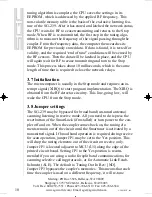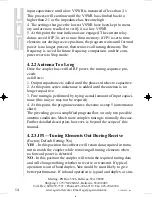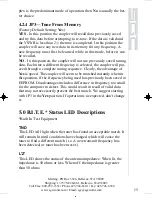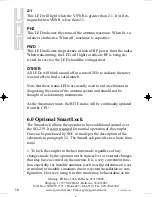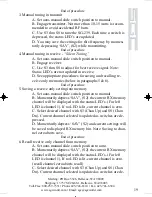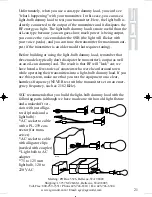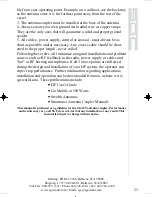
Mailing: PO Box 3526, Bellevue, WA 98009
Shipping: 13737 SE 26th St., Bellevue, WA 98005
Toll-Free: 800-259-7331 • Phone 425-746-6310 • Fax: 425-746-6384
www.sgcworld.com • Email: sgc@sgcworld.com
10
© 2001 SGC, Inc.
tuning algorithm is complete, the CPU saves the settings in its
EEPROM, which is addressed by the applied RF frequency. This
non-volatile memory table is the basis of the exclusive learning fea-
ture of the SG-239. After it has stored and latched the network status,
the CPU waits for RF to cease transmitting and returns to the Stop
mode. When RF is re-transmitted, the first step in the tuning algo-
rithm is to measure the frequency of the signal passing through the
coupler. From the frequency data, the computer then searches its
EEPROM for previously stored data. If data is found, it is tested for
validity, and the required “end of tune” conditions will be sensed by
the RF sensors. Then the data will be latched in place, and the CPU
will again wait for RF to cease transmitting and turn to the Stop
mode. This process takes about 10 milliseconds, which is the same
length of time that is required to close the network relays.
3.7 Initialization
The microcomputer is usually in the Stop mode and requires an in-
terrupt signal (XIRQ) to start program implementation. The XIRQ is
obtained from the RF detector circuitry. This line, going low, will
wake the CPU from the Stop mode.
3.8 Jumper settings
The SG-239 may be bypassed for broad band (un-tuned antenna)
scanning listening in receive mode. All you need to do is press the
reset button of the SmartLock (if installed) or turn power to the cou-
pler off and on. When the coupler comes back on, the tuning ele-
ments remain out of the circuit until the Smartuner is activated by a
transmitted signal. If broad band operation is required during receive
for scan operation, jumper JP1 may be set to the Yes position. This
will drop the tuning elements out of the circuit on receive only.
Jumper JP1 is located adjacent to MCU (U5) along the edge of the
printed circuit board. Setting JP1 to the Yes position is recom-
mended if you are using a radio for split band communications, for
scanning selective calling protocols, or for Automatic Link Estab-
lishment (ALE). The default is: Tuning Out In Rcv: [NO].
Jumper JP3 bypasses the coupler's memories. This means that each
time the coupler is used on a different frequency, it will re-tune
SG-239 Manual
page 10
Wednesday, October 17, 2001 08:31
Composite










